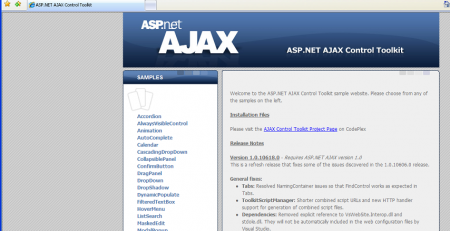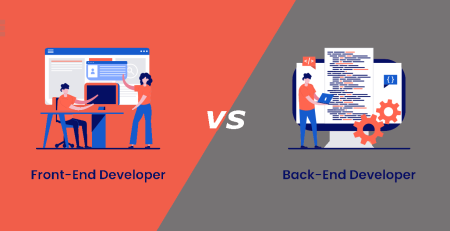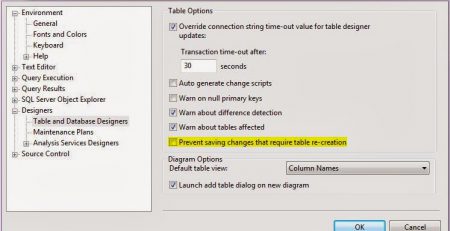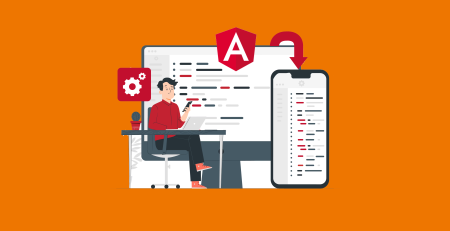Understanding Late Binding: Dynamic Objects and Reflection in C# .NET
Building resilient and cutting-edge apps requires adaptability and dynamism in the fast-paced world of C#.NET development. Developers frequently get into situations where they must work with unidentified types, load external plugins, or enhance functionality at runtime in order to fulfill the constantly evolving requirements of contemporary software. In C#.NET, the ideas of late binding, dynamic objects, and reflection come into play at this point, providing a potent set of tools to address these difficulties.
A technique called late binding enables programmers to postpone method resolution until runtime, enabling programs the freedom to interact with objects without being aware of their types at compile-time. The dynamic keyword in C#.NET allows for the construction of dynamic objects, which extend this idea by permitting the creation of variables with dynamic types and enabling dynamic method invocations and member access.
Reflection is a key asset in C# .NET, granting developers the ability to access types, methods, properties, and other members of assemblies at runtime. With reflection, dynamic exploration and interaction with types and members become feasible, presenting an array of opportunities for crafting extensible and adaptive software. This powerful feature unlocks a world of potential, enabling developers to create applications that can dynamically adapt and extend their functionalities.
We’ll set off on a fascinating adventure in this blog post to comprehend late binding, investigate the potential of dynamic objects, and discover the joys of reflection in C#.NET. We will go into the fundamental ideas of each of these subjects, demonstrating their practical applicability through examples from everyday life and code snippets. You will have a thorough grasp of late binding, dynamic objects, and reflection by the end of this article, enabling you to develop flexible, dynamic, and potent C#.NET applications.
So, let’s dive in and unlock the true potential of late binding, dynamic objects, and reflection in C# .NET!
Late Binding vs. Early Binding: A Brief Comparison
In the world of C# .NET programming, binding is a critical concept that determines how the compiler resolves method calls and accesses members of objects. Understanding the difference between late binding and early binding is essential, as it significantly impacts the flexibility and behavior of your code.
Early Binding:
Early binding, also known as static binding, happens throughout the building process. This approach resolves method calls and member access depending on the object’s type as known to the compiler at build time. The compiler checks to see if the members and methods are there, and any errors brought on by missing members or methods are discovered during compilation. The resultant code is efficient and optimized since method calls are instantly translated via early binding to the pertinent memory locations.
Example:
public class MyClass
{
public void SomeMethod()
{
Console.WriteLine("This is an example of early binding.");
}
}
// Usage:
MyClass obj = new MyClass();
obj.SomeMethod(); // Method call resolved at compile-timeLate Binding:
Dynamic binding, commonly referred to as late binding, delays method resolution until runtime rather than at compile time. In this technique, method calls and member access are decided during program execution since the compiler does not know the type of the object at compile-time. Since late binding enables you to interact with objects whose types aren’t known until runtime, it offers a ton of freedom. However, since method calls are handled at runtime and might result in overhead, late binding has a performance penalty.
Example:
public class MyClass
{
public void SomeMethod()
{
Console.WriteLine("This is an example of late binding.");
}
}
// Usage:
dynamic obj = GetDynamicObject(); // The type of obj is determined at runtime
obj.SomeMethod(); // Method call resolved at runtime (late binding)Key Differences:
- Early binding occurs at compile-time, while late binding occurs at runtime.
- Early binding provides better performance due to direct method resolution, while late binding introduces runtime overhead for method resolution.
- Late binding allows for more dynamic behavior, such as working with unknown types or dynamically loaded plugins, making it ideal for scenarios where the type is determined at runtime.
Introduction to Dynamic Objects in C# .NET
Dynamic objects in C# .NET refer to variables or entities whose types are determined at runtime rather than compile-time. The dynamic keyword, introduced in C# 4.0, plays a significant role in working with dynamic objects. When a variable is declared as dynamic, the compiler defers type checking until runtime, allowing the object’s type to be resolved dynamically during execution.
Dynamic objects offer a level of flexibility and dynamism not achievable with statically typed objects. They enable developers to interact with objects and perform method invocations, property access, and other operations without requiring prior knowledge of the object’s type at compile-time.
Key characteristics of dynamic objects:
- Late Binding: Dynamic objects support late binding, meaning the resolution of method calls, property access, and other operations occurs at runtime instead of compile-time. This allows developers to work with unknown or dynamic types more easily.
- Type Checking at Runtime: The dynamic keyword defers type checking to runtime, which means errors related to incompatible types may not be caught until the application is running.
- Interaction with Unknown Types: Dynamic objects are particularly useful when working with data from external sources, APIs, or user inputs, where the specific types are not known until runtime.
- Reflection: Dynamic objects often go hand in hand with reflection, as reflection enables developers to examine and manipulate dynamic types and members at runtime.
Example of using dynamic objects:
dynamic dynamicObject = GetUnknownObject(); // Object with unknown type dynamicObject.SomeMethod(); // Method invocation resolved at runtime dynamicObject.SomeProperty = "Hello"; // Property assignment resolved at runtime
Overall, dynamic objects add a high degree of flexibility and adaptability to C# .NET applications, making them suitable for scenarios where the types are determined dynamically or when working with data from external sources or user inputs. However, it is essential to use dynamic objects judiciously and consider the trade-offs in terms of performance and potential runtime errors.
Understanding Reflection in C# .NET
Reflection is a powerful feature in C# .NET that allows developers to examine, analyze, and manipulate types, methods, properties, and other members of assemblies at runtime. It provides a dynamic way to interact with types and members, even when their specific details are not known until the application is running. Reflection is a fundamental part of many modern C# .NET applications, enabling them to be more flexible, adaptable, and extensible.
Key Concepts of Reflection:
- Runtime Type Discovery: Reflection enables you to discover and obtain information about types (classes, interfaces, structs, enums, etc.) at runtime. You can retrieve Type objects that represent these types, allowing you to access their members and perform various operations.
- Dynamic Member Access: With reflection, you can dynamically access and invoke methods, properties, fields, events, and other members of objects and types, even when their names or signatures are not known until runtime. This provides dynamic behavior and flexibility to your applications.
- The System.Reflection Namespace: Reflection is implemented through the System.Reflection namespace, which contains classes and interfaces that allow you to work with metadata, types, and members at runtime.
Common Use Cases of Reflection:
- Dependency Injection: Reflection is often used in dependency injection frameworks to dynamically resolve and instantiate objects based on their types, allowing for loosely coupled and highly modular applications.
- Serialization and Deserialization: Reflection plays a vital role in object serialization and deserialization, enabling data to be converted to and from object instances at runtime.
- Custom Attribute Discovery: Reflection allows you to discover and read custom attributes attached to types, methods, or properties, providing a mechanism for adding metadata or annotations to your code.
- Extensible Plugins and Extensions: Reflection is utilized to build dynamic plugin architectures, where external assemblies can be loaded and interacted with at runtime, extending the functionality of the application.
- Object Mapping: Reflection is employed in object mapping frameworks, enabling objects to be converted or copied from one type to another based on their properties.
Performance Considerations:
Reflection comes with a performance overhead, as it involves additional runtime checks and lookups. It is essential to use reflection judiciously and consider caching strategies to mitigate any performance impact, especially in performance-critical sections of the code.
Security Considerations:
Reflection can pose security risks, especially if it allows access to private or sensitive members of types. It’s essential to validate and sanitize user input and to use reflection carefully to prevent potential security vulnerabilities.
Retrieving Type Information with Reflection
In C# .NET, reflection provides a powerful way to inspect and retrieve information about types at runtime. The ability to examine type information dynamically enables developers to build highly flexible and extensible applications. In this section, we will explore how to retrieve type information using reflection, including obtaining Type objects and examining type members such as methods, properties, and fields.
- Obtaining Type Objects:
Getting a Type object that represents the requested type is the first step in using reflection to gather type information. The System namespace has a class called Type that offers a number of methods and attributes for looking up a type’s characteristics.
Example:
using System;
public class MyClass
{
public int MyProperty { get; set; }
public void MyMethod() { }
}
// Get the Type object representing MyClass
Type type = typeof(MyClass);- Examining Type Members:
Once we have the Type object, we can explore the members of the type, such as methods, properties, and fields.
2.1. Getting Methods:
We can use the GetMethods() method of the Type class to retrieve an array of MethodInfo objects representing the public methods of the type.
Example:
Type type = typeof(MyClass);
MethodInfo[] methods = type.GetMethods();
foreach (MethodInfo method in methods)
{
Console.WriteLine("Method Name: " + method.Name);
Console.WriteLine("Return Type: " + method.ReturnType);
// ... Additional method information can be obtained here
}2.2. Getting Properties:
To retrieve information about properties, we can use the GetProperties() method of the Type class, which returns an array of PropertyInfo objects representing the public properties of the type.
Example:
Type type = typeof(MyClass);
PropertyInfo[] properties = type.GetProperties();
foreach (PropertyInfo property in properties)
{
Console.WriteLine("Property Name: " + property.Name);
Console.WriteLine("Property Type: " + property.PropertyType);
// ... Additional property information can be obtained here
}2.3. Getting Fields:
We can use the GetFields() method of the Type class to get an array of FieldInfo objects representing the public fields of the type.
Example:
Type type = typeof(MyClass);
FieldInfo[] fields = type.GetFields();
foreach (FieldInfo field in fields)
{
Console.WriteLine("Field Name: " + field.Name);
Console.WriteLine("Field Type: " + field.FieldType);
// ... Additional field information can be obtained here
}- Working with Non-Public Members:
By default, the reflection methods such as GetMethods(), GetProperties(), and GetFields() retrieve only public members. To access non-public members, you can use overloaded versions of these methods and pass appropriate BindingFlags.
Example:
Type type = typeof(MyClass);
MethodInfo[] nonPublicMethods = type.GetMethods(BindingFlags.NonPublic | BindingFlags.Instance);
foreach (MethodInfo method in nonPublicMethods)
{
Console.WriteLine("Non-Public Method Name: " + method.Name);
}Late Binding with Dynamic Keyword
By deferring method resolution until runtime in C#.NET, late binding enables programmers to deal with objects without being aware of their types at compile time. By permitting variables to be defined with dynamic types, the dynamic keyword, which was added in C# 4.0, is essential for enabling late binding. In situations where the type is decided at runtime, this allows developers the ability to interact with objects and call methods dynamically.
In this section, we will explore how to use the dynamic keyword for late binding in C# .NET, understanding its benefits and real-world applications.
- Using the Dynamic Keyword:
To leverage late binding, we need to declare a variable with the dynamic keyword. Once a variable is declared as dynamic, the compiler treats it as a dynamic type, allowing us to perform method invocations and member access dynamically at runtime.
Example:
using System;
public class MyClass
{
public void SayHello()
{
Console.WriteLine("Hello, dynamic world!");
}
}
// Late binding with the dynamic keyword
dynamic obj = new MyClass();
obj.SayHello(); // Method invocation resolved at runtime- Late Binding with Dynamic Data:
Late binding becomes particularly useful when working with dynamic data, such as data retrieved from external sources or user input. By using the dynamic keyword, we can handle data whose types are not known until runtime.
Example:
dynamic jsonData = DeserializeJson(jsonString); // Deserialize JSON data to dynamic object
dynamic xmlData = DeserializeXml(xmlString); // Deserialize XML data to dynamic object
Console.WriteLine("Name: " + jsonData.Name);
Console.WriteLine("Age: " + jsonData.Age);
Console.WriteLine("Title: " + xmlData.Title);
Console.WriteLine("Author: " + xmlData.Author);- Late Binding with External Assemblies:
Late binding is also invaluable when working with external assemblies or plugins. The dynamic keyword allows us to interact with objects and invoke methods without requiring explicit knowledge of the types involved.
Example:
Assembly externalAssembly = Assembly.LoadFrom("ExternalPlugin.dll");
Type pluginType = externalAssembly.GetType("ExternalPlugin.Plugin");
dynamic pluginInstance = Activator.CreateInstance(pluginType);
pluginInstance.Execute(); // Invoke the Execute method of the plugin dynamically- Pros and Cons of Late Binding:
Late binding is the best option when working with dynamic data or in situations where types are decided at runtime since it provides unmatched flexibility and dynamism. There are certain costs associated with it, though. When opposed to early binding, when method calls are resolved at compile-time, late binding may result in possible performance cost because method resolution happens at runtime. To minimize the effects on speed, it is crucial to employ late binding sparingly and take into account caching techniques.
Invoking Methods Dynamically Using Reflection
Reflection in C#.NET enables programmers to dynamically launch methods at runtime, even if the exact method names or types are not known until the application is running. This potent feature offers you a world of opportunities, enabling you to create adaptive and agile applications that can react quickly to shifting needs. With the help of code samples, we will examine how to dynamically invoke functions in C#.NET using reflection in this section.
- Obtaining MethodInfo:
We must first get a MethodInfo object that represents the method we wish to call in order to call it dynamically. The name, arguments, and return type of a method are all provided by the MethodInfo class. Using reflection methods from the Type class, such as GetMethod(), we may access MethodInfo objects.
Example:
using System;
using System.Reflection;
public class MyClass
{
public void SayHello(string name)
{
Console.WriteLine("Hello, " + name + "!");
}
}
// Obtaining the MethodInfo for the SayHello method
Type type = typeof(MyClass);
MethodInfo methodInfo = type.GetMethod("SayHello");- Invoking the Method:
If the method is a static or instance method, we may call it dynamically on a single instance of the class or on a null reference by using the MethodInfo object’s Invoke() function. The Invoke() function gets an object array with the method’s parameters and the return result of the method, if one exists.
Example:
// Create an instance of MyClass
MyClass obj = new MyClass();
// Invoke the SayHello method dynamically
methodInfo.Invoke(obj, new object[] { "John" }); // Output: "Hello, John!"- Invoking Methods with Different Parameters:
Reflection allows us to invoke methods with different parameters, including methods with varying numbers of parameters or methods that take parameters of different types.
Example:
public class MathOperations
{
public int Add(int a, int b) => a + b;
public double Divide(double a, double b) => a / b;
}
// Obtaining the MethodInfo for Add and Divide methods
Type type = typeof(MathOperations);
MethodInfo addMethod = type.GetMethod("Add");
MethodInfo divideMethod = type.GetMethod("Divide");
// Create an instance of MathOperations
MathOperations math = new MathOperations();
// Invoke the Add and Divide methods dynamically
int result1 = (int)addMethod.Invoke(math, new object[] { 5, 10 }); // Output: 15
double result2 = (double)divideMethod.Invoke(math, new object[] { 10.0, 2.0 }); // Output: 5.0- Error Handling:
When invoking methods dynamically, it’s essential to handle potential exceptions that might arise during runtime, such as ArgumentException, TargetException, or TargetInvocationException. Proper error handling ensures the robustness of your code.
Handling Unknown Types at Runtime
Handling unknown types at runtime is a common requirement in dynamic and extensible applications, especially when dealing with data from external sources or when working with plugins or user-provided configurations. In C# .NET, reflection and the dynamic keyword play crucial roles in managing unknown types at runtime. In this section, we will explore strategies for handling unknown types dynamically.
- Using the Dynamic Keyword:
The dynamic keyword in C# .NET provides a powerful way to handle unknown types at runtime. By declaring variables with the dynamic keyword, you can interact with objects without knowing their types until runtime.
Example:
dynamic unknownObject = GetUnknownObjectFromExternalSource();
// Check if the object has a specific property
if (unknownObject.SomeProperty != null)
{
// Access the property
Console.WriteLine(unknownObject.SomeProperty);
}
// Dynamically invoke a method on the object
unknownObject.SomeMethod();- Late Binding with Reflection:
Reflection allows you to work with unknown types at runtime by inspecting and invoking their members dynamically. You can use reflection to obtain Type objects, examine methods, properties, and fields, and then invoke them based on runtime conditions.
Example:
object unknownObject = GetUnknownObjectFromExternalSource();
Type objectType = unknownObject.GetType();
MethodInfo methodInfo = objectType.GetMethod("SomeMethod");
methodInfo.Invoke(unknownObject, null);- Utilizing Interfaces or Base Classes:
If you have a known set of possible types, you can use interfaces or base classes to handle unknown types dynamically. Create an interface or base class that defines common properties and methods, and then have your unknown types implement or inherit from them.
Example:
interface IPlugin
{
void Execute();
}
class UnknownPlugin : IPlugin
{
public void Execute()
{
// Implementation for UnknownPlugin
}
}
// At runtime, handle the unknown type as IPlugin
IPlugin plugin = GetPluginFromExternalSource();
plugin.Execute();- JSON Serialization/Deserialization:
When dealing with unknown types from external sources, JSON serialization/deserialization is a popular technique. You can use libraries like Newtonsoft.Json (Json.NET) to deserialize JSON data into dynamic objects or dictionaries.
Example:
using Newtonsoft.Json; string jsonData = GetJsonDataFromExternalSource(); dynamic unknownObject = JsonConvert.DeserializeObject(jsonData); Console.WriteLine(unknownObject.SomeProperty);
- ExpandoObject and IDictionary:
The ExpandoObject class and IDictionary interface allow you to create dynamic objects and add properties to them at runtime. This can be useful when working with unknown data structures.
Example:
dynamic dynamicObject = new ExpandoObject(); dynamicObject.Name = "John"; dynamicObject.Age = 30; Console.WriteLine(dynamicObject.Name); Console.WriteLine(dynamicObject.Age);
- Handling Exceptions:
When working with unknown types, there is a higher risk of encountering exceptions due to incompatible types or missing members. Always implement proper error handling to gracefully handle such situations and prevent application crashes.
Real-World Use Cases of Late Binding: Dynamic Plugins and Extensions
Late binding, facilitated by the dynamic keyword and reflection in C# .NET, offers a plethora of real-world use cases. One such compelling scenario is the implementation of dynamic plugins and extensions, where late binding empowers developers to build applications that can dynamically load, interact with, and extend functionalities at runtime. This opens up a world of possibilities for creating highly flexible and extensible software. In this section, we will explore how late binding is utilized to implement dynamic plugins and extensions in C# .NET.
- Dynamic Plugin Loading:
Late binding allows developers to load plugins dynamically without the need for explicit references during compile-time. This enables your application to become more modular, as plugins can be developed and distributed separately from the core application.
Example:
Suppose you are building an image processing application. With late binding, you can allow users to develop custom image filters as plugins. These filters can be loaded dynamically at runtime, providing users with the flexibility to extend the application’s image processing capabilities without modifying the core code.
- Extensible Frameworks:
Late binding is invaluable when building extensible frameworks or libraries. Developers can design frameworks with abstract classes or interfaces and use late binding to allow users to provide custom implementations based on their requirements.
Example:
Consider a reporting framework that generates various types of reports (e.g., PDF, Excel, HTML). By employing late binding and providing an abstract ReportGenerator class, developers can create custom report generators and dynamically load them into the framework to support additional report formats without changing the framework’s source code.
- Dynamic Configuration and Scripting:
Late binding enables dynamic configuration and scripting capabilities, allowing users to define and modify application behavior at runtime without restarting the application.
Example:
You could implement a configuration system that reads user-defined scripts in a scripting language (e.g., Python or Lua) using late binding. These scripts can modify the behavior of the application by dynamically defining new functionality or modifying existing behavior, making your application highly customizable.
- Plugin-Based Authentication and Authorization:
Late binding can be leveraged to implement dynamic authentication and authorization mechanisms based on plugins. By loading authentication and authorization modules dynamically, you can support different authentication methods without recompiling the entire application.
Example:
In a web application, you can use late binding to load different authentication modules, such as OAuth, LDAP, or custom authentication providers, depending on the user’s choice or the specific requirements of the application.
- User-Defined Rules and Conditions:
Late binding allows users to define rules, conditions, or expressions that dictate the behavior of the application.
Example:
In a rule-based system, users can define conditions using a domain-specific language, and late binding can interpret and execute these conditions at runtime, influencing the application’s actions accordingly.
Performance Considerations and Best Practices for Late Binding, Dynamic Objects, and Reflection in C# .NET
While late binding, dynamic objects, and reflection in C# .NET provide powerful capabilities for building flexible and extensible applications, they come with performance considerations that need to be taken into account. When using these features, it’s essential to strike a balance between flexibility and performance. In this section, we will explore performance considerations and best practices to optimize the usage of late binding, dynamic objects, and reflection in C# .NET.
- Minimize Unnecessary Reflection Calls:
Reflection can be expensive in terms of performance, so it’s crucial to minimize unnecessary reflection calls. Whenever possible, cache and reuse reflection results, such as Type objects or MethodInfo objects, rather than repeatedly invoking reflection methods.
Example:
// Bad practice (unnecessary reflection call on each iteration)
foreach (var item in collection)
{
Type type = item.GetType();
// ... Do something with the type
}
// Good practice (cache the Type object outside the loop)
Type cachedType = collection.FirstOrDefault()?.GetType();
foreach (var item in collection)
{
// Use the cachedType instead of calling GetType() on each iteration
// ... Do something with the type
}- Use Compile-Time Checks:
While late binding and reflection provide dynamic behavior, whenever possible, prefer compile-time checks using interfaces, base classes, or generics. Compile-time checks are more efficient and catch errors early in the development process.
Example:
// Late binding with reflection dynamic unknownObject = GetUnknownObject(); unknownObject.SomeMethod(); // Method call resolved at runtime // Compile-time checks with interfaces IMyInterface knownObject = GetKnownObject(); knownObject.SomeMethod(); // Method call resolved at compile-time
- Limit the Use of Dynamic Keyword:
The dynamic keyword enables dynamic behavior, but excessive use can lead to less maintainable code and performance overhead. Use dynamic only when necessary, such as working with dynamic data or when late binding is a requirement.
- Favor Static Typing for Performance-Critical Sections:
For performance-critical sections of your code, consider using static typing and early binding instead of late binding and reflection. Static typing provides better performance, as method calls are resolved at compile-time.
- Caching Reflection Results:
Caching reflection results, such as Type objects, PropertyInfo objects, or MethodInfo objects, can significantly improve performance. Create a cache dictionary to store these objects and reuse them when needed.
Example:
// Bad practice (repeatedly invoking reflection)
Type type = typeof(MyClass);
MethodInfo methodInfo = type.GetMethod("SomeMethod");
object[] parameters = new object[] { ... };
for (int i = 0; i < 1000; i++)
{
methodInfo.Invoke(null, parameters);
}
// Good practice (caching reflection result)
Type type = typeof(MyClass);
MethodInfo methodInfo = type.GetMethod("SomeMethod");
object[] parameters = new object[] { ... };
for (int i = 0; i < 1000; i++)
{
methodInfo.Invoke(null, parameters);
}- Security Considerations:
Reflection introduces security risks, especially when used with user-provided input. Always validate and sanitize any user inputs before using them in reflection calls to prevent potential security vulnerabilities.
- Consider Alternatives:
In some cases, alternatives to reflection, such as using delegates, expression trees, or code generation, might provide better performance. Evaluate different approaches based on the specific requirements of your application.












Leave a Reply